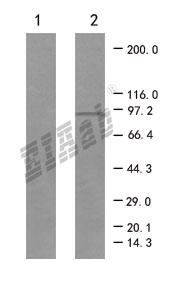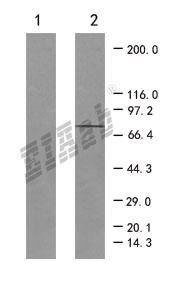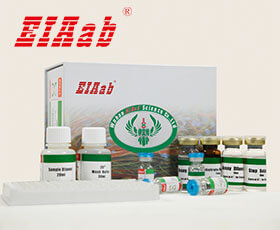CLIA Kit
Chemiluminescence immunoassay (CLIA) is a highly sensitive analytical technique for the quantitative detection of multiple antigens, haptens, antibodies, hormones, enzymes, fatty acids, vitamins and drugs by chemiluminescence assays combined with high specific immune responses. It is a novel immunoassay technique for enzyme analysis.
Monoclonal antibody
If you can select a make a specific antibody of plasma cells in culture, can be
formed by single cell by splitting proliferation of cells, namely monoclonal.
Small Molecule
That molecular weight is less than 500 molecules and small molecules are generally simple monomer substance.
Peptide
Peptide is a biochemical substance between amino acid and protein. It is a protein fragment, smaller than the protein molecular weight and larger than the amino acid molecular weight.
cDNA Clone
Starting from the transcription product of a gene(such as mRNA), reverse transcription synthesizes complementary DNA(cDNA), which is then recombined into a carrier, After replication and screening to obtain cDNA molecules.
Over-expression Lysate
EIAab has a wide range of cell lysates from tissues and cell lines, including total protein lysates and cell lines lysates. The main source of tissue lysates are pathological tissue and normal tissue, and the cell lines lysates includes over-expression lysates of full length human proteins expressed in mammalian HEK293T cells as positive controls for antibody validation.
Tag/Control Antibody
Epitope tag antibodies are highly specific antibodies for the detection and purification of the tagged proteins. EIAab offers a wide range of highly specific epitope tag antibodies to satisfy researchers' need, including His Tag antibodies, HA Tag antibodies, Myc Tag antibodies and GFP Tag antibodies, etc.
Loading control antibodies are against loading controls which are usually encoded by housekeeping genes and express stably at high levels in many cell lines and tissues. Some common loading control antibodies include, GAPDH、β
-tubulin、β
-actin etc.
Secondary Antibody
Secondary antibodies recognize an antibody as their target antigen, usually referred to as the primary antibody which in turn is bound to its antigen or protein of interest.
Primary Cells
Primary cells differ from immortalized cell lines by limited population doubling. Without genetic and chemical modifications, primary cells retain many of the important physiological properties of their origin tissue systems and closely mimic the in vivo conditions. They, therefore, offer ideal cell models for a vast variety of research, from fundamental cell biology and physiology, developmental biology, disease mechanisms, to drug screening and therapeutics development.
Cell Line
A cell line refers to a population of cells that have been propagated after the primary cell culture has been successfully passaged for the first time. It also refers to cultured cells that can be passaged for a long period of time. (This led to the subsequent FiniteCellLine and InfiniteCellLine). Therefore, a cell line narrowly refers to a cell that can be passaged continuously (used in both spoken and written languages in a specific environment). Refers to cells that can be passaged.
COVID - 19 Related Product
Related Kit
Related Antibody

Recombinant Protein
Recombinant proteins are obtained by the use of recombinant DNA or recombinant RNA. The expression platforms of recombinant protein mainly include five expression systems: escherichia coli, bacillus subtilis, yeast, mammalian cells and insect baculovirus cells.

 Product
Product  A-Z (GeneName)
A-Z (GeneName) 











































 Discount:
Discount: